The London-based artist Emma Talbot explores feminist theory, ecopolitics, technology and communication. Working across painting, sculpture, drawing and animation, she combines lush imagery with fragments of text to create visual narratives that are inspired by her own experiences, memories and psychological projections. ‘I want to see how the interior world of thought can be represented in idiosyncratic ways. I think this kind of image-making can more accurately represent experience,’ she has said of her work. In 2020, Talbot was the winner of the 8th edition of the Max Mara Art Prize for Women; the prize included a six-month residency organised by the Collezione Maramotti in Reggio Emilia, Italy. She will present her resulting work in a solo exhibition titled ‘The Age / L’Età’ at the Whitechapel Gallery from 30 June–4 September.
Where is your studio?
At the moment my main studio is in Reggio Emilia in Italy. It’s an old retail unit in parade of shops. It’s a small town and the neighbours are all really friendly, which is nice. The rest of the time I’m based in Walthamstow in London. The studio there is in an old factory with lots of other artist studios.
Has being in a new environment affected the ways in which you work?
Yes, totally. One of the things that I really wanted to do in Italy was to learn machine knitting. I thought it would allow me to manipulate the surfaces of my three-dimensional work, to make them more interesting. So, that’s what I’ve been doing during the residency: learning how to machine knit and also working with a company that do digital knitting. They’ve helped me create surfaces that are totally new for my work, which has been amazing.
What’s your working routine like in Italy compared to London?
It’s not enormously different, but in Italy, I spend a bit more time just hanging out, having a coffee, before I get to the studio in the morning. When I’m in the studio, I’m quite dedicated and tend to work long hours, late into the night but it takes me a bit of time to get going in the morning. I prefer to start later and to work later.
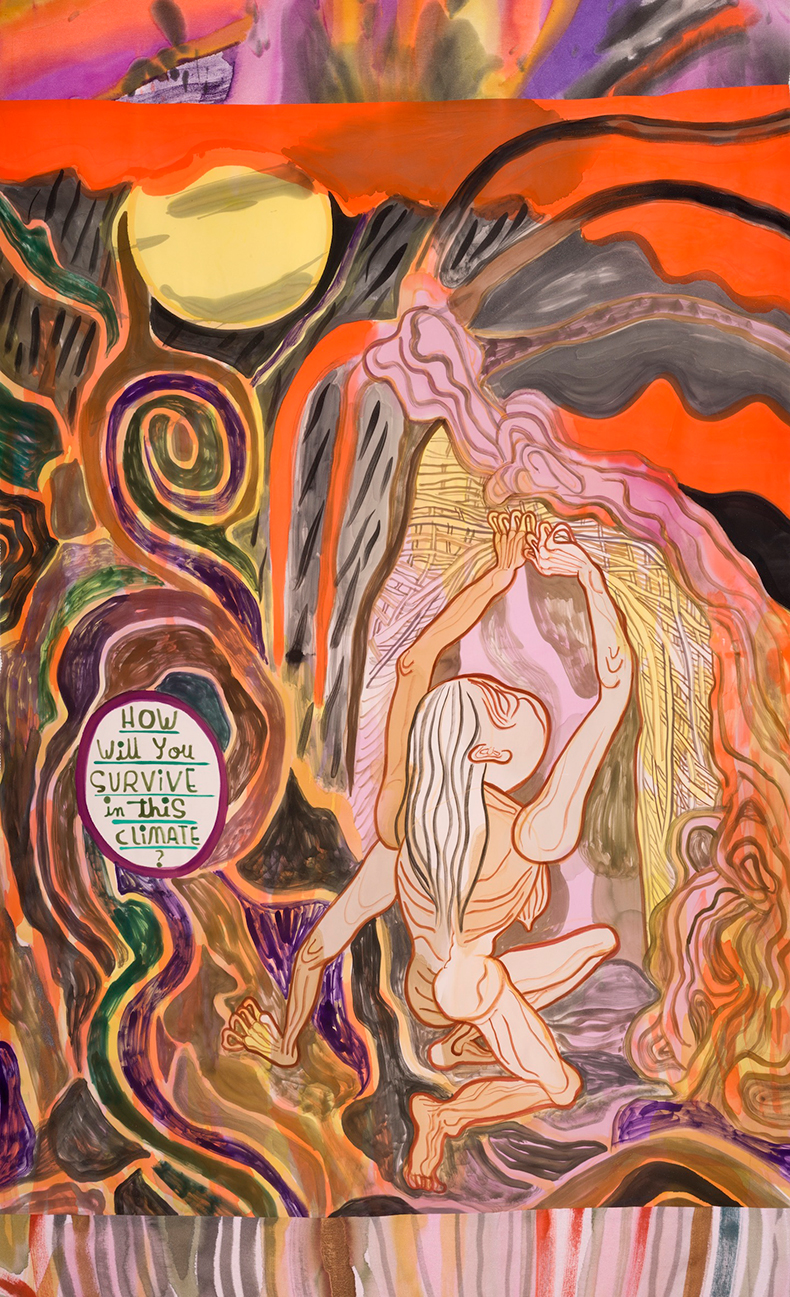
Volcanic Landscape (detail; 2022), Emma Talbot. Courtesy the artist © Carlo Vannini
Do you listen to anything while you’re working?
I listen to loads of different things: a lot of podcasts and different kinds of music. Recently, in Italy, I’ve been listening to an Italian radio station called Rai 3. It’s their cultural radio channel. I’ve been learning Italian and it really helps me with that. I have it playing all day long in the studio at the moment; I’m a bit obsessed with it. When I first arrived, it was just like a wall of sound but now, I find I can actually follow and understand it, which is quite satisfying. I find that what I’m listening to helps to create a certain mood in the studio, particularly with music. There are some albums, for example, that I know I can work really well to. Sometimes I listen to an album over and over on repeat because it makes such a good atmosphere. There’s an Alice Coltrane album called Journey in Satchidananda, for example. I also love Innervisions by Stevie Wonder and a few albums by a Malian musician called Vieux Farka Touré.
Do you pin up work by other artists?
I never put anything on the walls of the studio. If I want to refer to something, I tend to look at it on my phone.
What about books?
There are usually a number of books that I’m really thinking about at the time of making. I don’t read them in the studio but I have them there in case I want to look something up, especially if I’m painting a text and want to check that I’ve understood something properly.
What was in the pile for this latest body of work?
I had Truth or Dare by Starhawk who is sort of like a permaculture activist. She’s written quite a few books but what I loved most about this one is that it’s like a compendium of different types of writing: descriptions of what it’s like to make a protest, poems, instructions for meditation and pieces of fiction. It has all these different levels of language and different ways of thinking around these ideas about permaculture. The other book which was really important to me was In Catastrophic Times: Resisting the Coming Barbarism by Isabelle Stengers. It’s about how we’ve arrived at the point we are at now, which is kind of catastrophic, and how we might proceed. It’s not a very thick book and I’ve basically underlined everything in it.
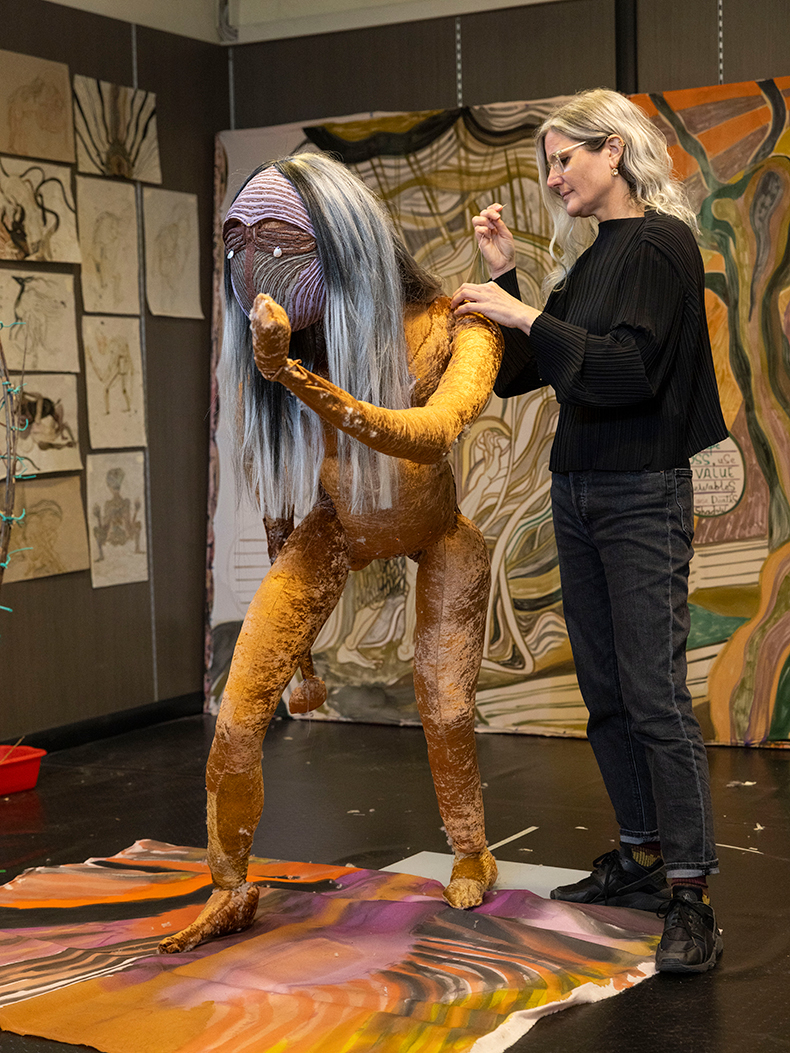
Talbot in her studio in Reggio Emilia in April 2022. Photo: Bruno Cattani/Fotosuperstudio
How messy is your studio?
It depends what I’m doing. If I’m in the middle of making a 3D work then there’s stuff all over the place, but in between making, I always tidy up: it allows me to think more clearly.
What’s your typical studio lunch?
I like something light for lunch. In Italy it’s usually some type of salad which I either buy from a bar around the corner from the studio or I pick up ingredients on the way and make it there.
What do you wear while you’re working?
In the winter, I wear layers and layers of puffer coats because I get really cold. The studio in Italy is the first one I’ve had with heating which is a bit of a luxury for me, but in London, I pile on the layers. I tend to wear old clothes which can get dirty because I have a habit of getting paint on myself.
Who’s the most interesting visitor you’ve had to the studio?
This probably isn’t a very exciting answer but the most interesting visits for me are always the ones where we’re planning something: a project or show. Generally, I’m a real hermit. I just go in my studio and make my work. Once I start working, I have to be able to just concentrate. I don’t have a lot of tea breaks or anything like that. I sometimes have an assistant who helps me in the studio, which I really like but generally, I’m happy on my own.
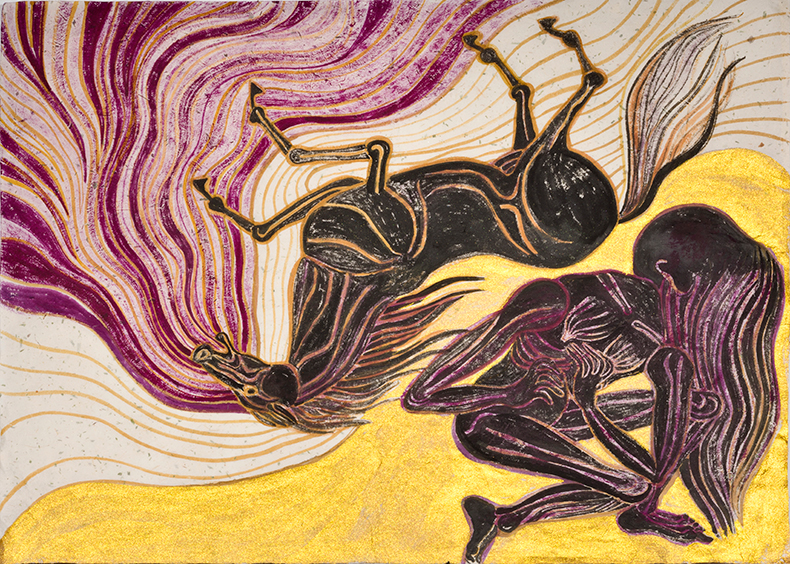
The Trials (detail; 2022) Emma Talbot. Courtesy the artist © Carlo Vannini.
What’s the most unusual object in there?
In Walthamstow there are lots of interesting fabric shops. Quite often I go in and buy different pieces of material without knowing what I’ll use it for. I keep the fabrics on shelves which means that if I’m working on something I can go a look at what I’ve collected to see what might work. I have a lot of metallic fabrics; one is electric blue. Every time I see it, I think it’s amazing, but I haven’t found the right moment for it yet.
Is anyone or anything banned from the studio?
I don’t really like people to come to the studio to hang out or socialise: it’s not that type of space. It’s quite private to me. Having said that, when we were packing up the work in Italy to send to the Whitechapel gallery, the tobacconist from the shop next door came into the studio as he was interested in what was happening. He stayed there while we were packing up and it felt nice to have him in the space, but that wasn’t while I was making, of course.
‘Emma Talbot: The Age / L’Età’ is at the Whitechapel Gallery in London from 30 June–4 September.
Unlimited access from just $16 every 3 months
Subscribe to get unlimited and exclusive access to the top art stories, interviews and exhibition reviews.

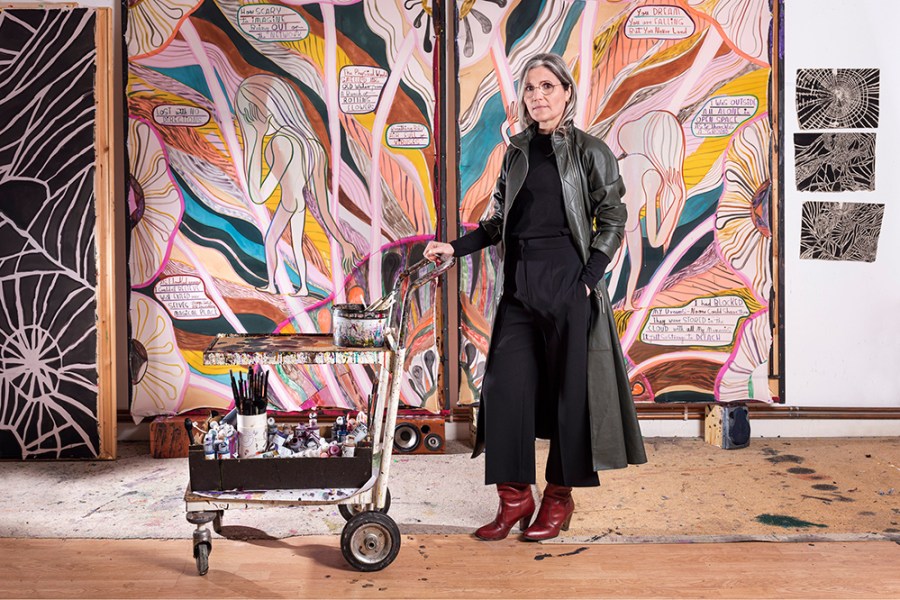
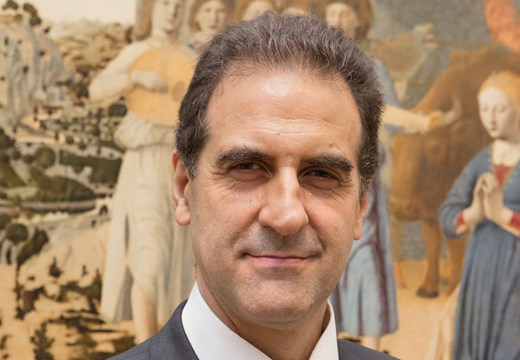

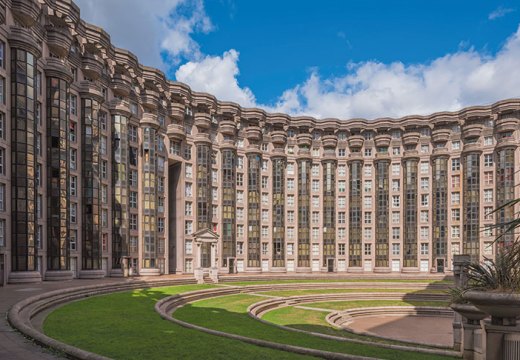









![Masterpiece [Re]discovery 2022. Photo: Ben Fisher Photography, courtesy of Masterpiece London](http://www.apollo-magazine.com/wp-content/uploads/2022/07/MPL2022_4263.jpg)
It’s time for the government of London to return to its rightful home